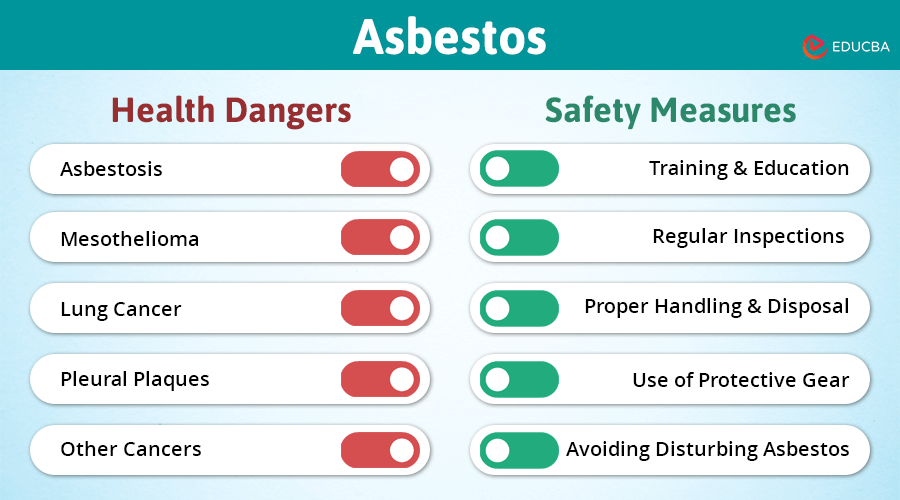Are there any Asbestos Dangers?
Asbestos is a set of six naturally extracted silicate minerals. These minerals have thin, fibrous crystals found in soil and rocks. The fibres are soft, flexible and resistant to heat, electricity and chemical corrosion. These properties have made asbestos famous in construction, automotive and other industries. It has been in use for thousands of years due to its longevity and resistance. However, the very qualities that make helpful asbestos also make it hazardous. This blog explores asbestos dangers and the measures to ensure safety.
Types of Asbestos
Following are the six types of asbestos:
- Chrysotile: The most common type, making up about 95% of asbestos in commercial use. Found in walls, ceilings, floors and roofs of homes and businesses.
- Amosite: Used in cement sheets and pipe insulation, known for its intense heat resistance.
- Crocidolite: Used in steam engines and spray-on coatings. It has thin fibres that make it the most dangerous type.
- Tremolite: Not used commercially but can be found as a contaminant in talc, vermiculite and chrysotile asbestos powders.
- Actinolite: Similar to tremolite, it is not known for commercial use but as a contaminant.
- Anthophyllite: Rarely used commercially, it is present as a contaminant in composite flooring.
Why is Asbestos Dangerous?
Asbestos’s dangers lie in its fibres, which it releases in the air when disturbed. The fibres are so tiny that they are not visible to the naked eye, making them easily inhaled without detection. If inhaled or ingested, these become trapped in the body. Once in the body, they can remain there for a long time, leading to diseases that may not appear until decades later.
Who is at Risk for Asbestos Exposure?
Anyone can be at risk for asbestos exposure, but certain groups are more vulnerable due to their work or living conditions.
- Construction workers often encounter asbestos in old buildings.
- Shipyard workers find it in shipbuilding for its heat-resistant properties.
- Industrial workers might work with products containing asbestos.
- Firefighters risk exposure during the demolition of buildings.
- Homeowners of houses built before the 1980s can be exposed during
- renovations or demolitions.
What Health Problems Can Asbestos Cause?
Exposure to asbestos can cause various health issues, and these issues develop years after the initial exposure.
#1. Asbestosis
Asbestosis is a long-term respiratory condition caused by inhaling asbestos fibres. These fibres lead to scarring of the lung tissue, resulting in decreased lung function and breathing difficulties.
#2. Mesothelioma
Mesothelioma is a rare and highly progressive form of cancer that mainly affects the protective lining surrounding the lungs, abdomen or heart. The cause is exposure to asbestos, and its symptoms can take years to manifest.
#3. Lung Cancer
Asbestos exposure can vastly increase the chances of developing lung cancer. The chances are even higher for individuals who smoke, as the combined effects of smoking and asbestos fibres can be particularly harmful.
#4. Pleural Plaques
Pleural plaques are thickened patches on the lining of the lungs. While they are generally non-cancerous, they can cause discomfort and may indicate previous asbestos exposure, leading to further health monitoring.
#5. Other Cancers
Asbestos exposure can lead to multiple types of cancers, including those of the larynx, ovaries and gastrointestinal tract. These associations highlight the widespread impact of asbestos on various body systems beyond the lungs.
Safety Measures to Prevent Asbestos Exposure
Ensuring safety from asbestos exposure requires awareness and proactive measures. Here are some steps to minimise risk:
#1. Training and Education
Training and education help individuals understand their responsibilities in managing asbestos. Through duty to manage asbestos training, workers will learn to recognise asbestos-containing materials (ACMs) and follow proper procedures to ensure safety.
#2. Regular Inspections
Regular inspections of buildings, especially older ones, can help identify ACMs before they cause any harm. Trained professionals with expertise should perform these inspections to evaluate the asbestos’s condition accurately.
#3. Proper Handling and Disposal
Only trained professionals should handle asbestos, as improper handling can release dangerous fibres. Following legal guidelines for safely handling and disposal of ACMs is essential to prevent exposure and environmental contamination.
#4. Use of Protective Gear
Workers should wear appropriate protective gear when handling asbestos, including masks, gloves and coveralls. This gear helps prevent inhalation of asbestos fibres and protects the skin from contact.
#5. Avoiding Disturbing Asbestos
If asbestos is in good condition and not disturbed, it is less likely to pose a risk. Careful planning during renovations or demolitions is essential to avoid disturbing ACMs and releasing fibres into the air.
Importance of Online Asbestos Training
Proper training is essential for anyone who may be at risk of exposure, and online training offers a convenient and effective solution. Asbestos awareness online training equips individuals with the knowledge and skills to protect themselves and others from asbestos exposure. It covers the likely locations of ACMs, the health risks of asbestos, strategies to prevent exposure and emergency procedures for accidental asbestos disturbance. It ensures that workers are well-prepared to safeguard themselves from asbestos exposure and supports compliance with regulations.
Final Thoughts
Understanding asbestos and its dangers is critical for ensuring safety and preventing serious health issues. It involves learning what asbestos is, its dangers, potential risks and health problems, as well as how to manage it safely. Comprehensive training is essential to this process, providing trainees with the practical knowledge to protect themselves from exposure.
Recommended Articles
We hope you follow these safety measures to stay safe from asbestos dangers. Here are other articles you can read.



